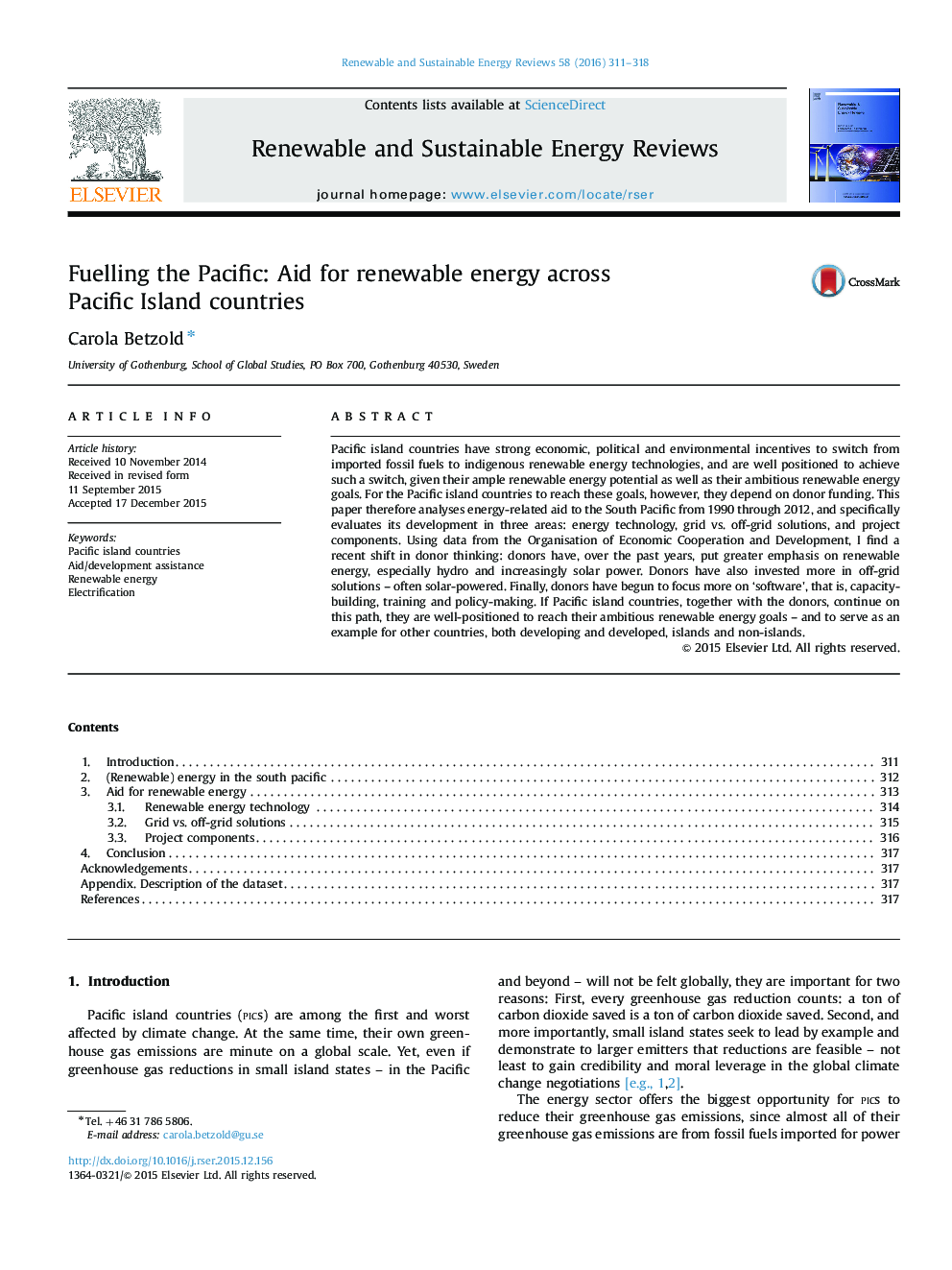| Article ID | Journal | Published Year | Pages | File Type |
|---|---|---|---|---|
| 8114067 | Renewable and Sustainable Energy Reviews | 2016 | 8 Pages |
Abstract
Pacific island countries have strong economic, political and environmental incentives to switch from imported fossil fuels to indigenous renewable energy technologies, and are well positioned to achieve such a switch, given their ample renewable energy potential as well as their ambitious renewable energy goals. For the Pacific island countries to reach these goals, however, they depend on donor funding. This paper therefore analyses energy-related aid to the South Pacific from 1990 through 2012, and specifically evaluates its development in three areas: energy technology, grid vs. off-grid solutions, and project components. Using data from the Organisation of Economic Cooperation and Development, I find a recent shift in donor thinking: donors have, over the past years, put greater emphasis on renewable energy, especially hydro and increasingly solar power. Donors have also invested more in off-grid solutions - often solar-powered. Finally, donors have begun to focus more on 'software׳, that is, capacity-building, training and policy-making. If Pacific island countries, together with the donors, continue on this path, they are well-positioned to reach their ambitious renewable energy goals - and to serve as an example for other countries, both developing and developed, islands and non-islands.
Related Topics
Physical Sciences and Engineering
Energy
Renewable Energy, Sustainability and the Environment
Authors
Carola Betzold,
